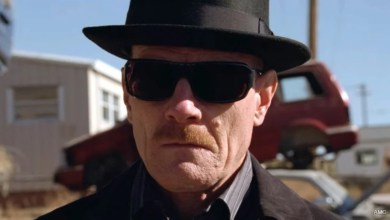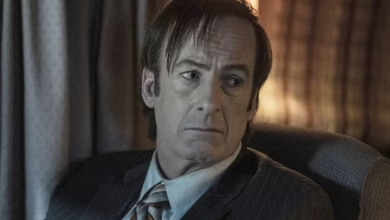Here’s What Was Cut from the ‘Better Call Saul’ Finale — and What Bob Odenkirk and Rhea Seehorn Think a Reboot Might Look Like
Awards Circuit Podcast: Bob Odenkirk, Rhea Seehorn, Giancarlo Esposito and Peter Gould from ‘Better Call Saul.’ Also: Latest strike news and the ‘Barbenheimer’ phenom
In the final scene of “Better Call Saul,” Kim Wexler (Rhea Seehorn) is leaving ADX Montrose prison, where she has just visited Jimmy McGil/Saul Goodman/Gene Takovic (Bob Odenkirk) for the first time since he was sentenced to 82 years behind bars. As he watches her leave from the prison grounds, he makes his signature finger guns, and she looks back with a bit of a melancholy glance. Originally, as Seehorn shot the scene, Kim returned those finger guns — but it was ultimately cut. “At first I was like sad [that it was removed] because I’m a hopeless romantic,” Seehorn says. “But [exec producer] Peter [Gould] said, ‘we watched it and it looked like Kim was back in the game, rather than Kim is saying I’m there for you forever.’ And I said oh yeah, I don’t want that. It was the right decision.”
Seehorn, Odenkirk, Gould and Giancarlo Esposito — who played Gus Fring on both “Breaking Bad” and “Better Call Saul” — gathered one more time in March for an FYC panel related to the final season of “Better Call Saul.” On this week’s episode of the Variety Awards Circuit Podcast, we include the audio from that lively panel, as the stars and Gould discuss the reaction to the ending, and what they thing those characters might be up to now.
But first, on the Awards Circuit Roundtable, Variety’s Matt Donnelly joins us for an update into how the SAG-AFTRA strike has impacted publicists, talent agencies and more. And of course, we chat about the “Barbenheimer” weekend to remember. Listen below!
Now that “Better Call Saul” pulled off what many have called the best series finale in recent memory, the stars and producers can breathe a sigh of relief. But at the time, Gould said “it was very unnerving and worrying because people are really tough on final seasons. For good reason. Audiences have invested many hours with these characters. How do you end it? In my mind, we’re still figuring out serialized television.
“It sounds crazy, but a show that goes 63 episodes after another show that went 62 episodes, how do you bring that to a satisfying conclusion? It kind of psyched me out,” he adds. “Also, because I had been part of ‘Breaking Bad,’ and I thought that ended really well. And so how are we going to do this? Personally, I went with my gut all the way. And I didn’t know if it was going to work for anybody else.
“You start psyching yourself out, especially if you start thinking, well, what would the audience like? As you start picturing this mythical Hydra headed creature of the audience. You can just throw yourself off. You have to think, What do I like? What satisfying to me? What’s satisfying to the group? What works for us? If it works for us, and we care about the show a lot, then hopefully everybody else will like it too.”
Esposito agrees, and says the finale — and the fate of Jimmy/Saul — struck the tone it needed to strike. “Hearing it talked about in terms of what’s a satisfying ending, I keep coming back to the organic truth of what morally is right for people to do,” he says. “And that compass is so evident watching this. You play the game as long as you can, until you just can’t play that game anymore.”
As for where the characters might go yet, Seehorn imagines that Kim starts up a new legal practice and “little by little” she tries to decrease Jimmy’s prison sentence. “And they maintain a relationship. There’s no happily ever after. But a lifelong connection that happens.”
As for Odenkirk, he has a much more commercial idea of what comes next. “I think what happens is Bob Odenkirk takes all his money and invests it in a chain of cookies and ice cream and little hotdogs. And it all goes bust he loses all his money, he comes banging on Peter Gould’s door, ‘there’s gotta be another series!’”
Then, he continues the gag, he winds up playing Saul Goodman on broadcast TV. “Saul gets out of jail for some reason. And he has a different client every week and he never goes to court,” he says, then facing Gould: “So we go back to the original idea that you originally pitched me at the Chateau Marmont. Procedural show, Saul Goodman, different client every week, and they never go to jail. He gets them off because he manipulates everyone!” Stay tuned.




